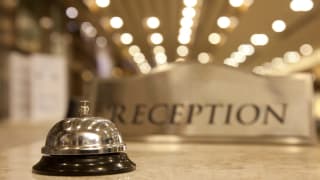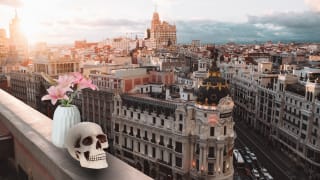The relationship between destinations and icons: how to create an iconic building?
By John Brash, Founder and CEO, Brash
We all know the power that iconic buildings have to elevate a city or a whole country’s position on the world map. From the Guggenheim Museum in Bilbao, which created urban redevelopment and economic stability for the less visited Bilbao city, to the Burj Khalifa, which has further strengthened Dubai’s position as the luxury spot in the Middle East, such iconic buildings not only create a destination brand but spark a revelation.
All buildings are part of the physical environment, stirring the city image, living conditions, social wellbeing, and economic profile. So, how does one become an iconic site for locals and tourists? Below are my tips on how to amplify the relationship between master plan developments and iconic components within cities and turn an icon into the lynchpin of a destination.
Storytelling: be synonymous with constant reinvention
To tell a unified story, the destination and icon should be two closely linked brands whilst still owning their individuality. By allowing the icon to take the lead, it is able to establish itself as the symbol of the city. Working on the Burj Khalifa it was evident that, to succeed, we had to create a luxury brand in which every detail was perfect, knowing this tower had the potential to inspire the region as a whole and further reinforce Dubai as truly global city. It was a symbol for the shift which began at the turn of the millennium as the emirate matured into a global player, extending its reach in the world. Similar to the Empire State building in New York 80 years earlier, this tower had the potential to change both the skyline and the way the emirate was perceived internationally.
At the start of the process, it is vital to identify and define the destination and building's shared and unique attributes to ensure they are linked, but also to carve out their individual identities and appeal. Developing two synergistic brand codes is essential; the icon needs to act as a seed for the destination, inspiring essence, and culture. It is also important to adapt and shape-shift to instil continual surprise, celebrating the pivots and unexpected moments that are created by never sitting still and opening the doors for the whole world to enjoy. With the Burj Khalifa, no touchpoint was ignored in designing a 360-degree experience that took in everything in its surroundings, from the glamorous spirit of Dubai to the sense of localism and became one of the most iconic buildings in the world.
Community: create more than a brand, spark a revelation
A truly iconic building is created by developing more than just a brand. You need to spark a revelation whilst keeping the community feel of the city. You need to inspire and create a buzz by orchestrating journeys of discovery, prioritising storytelling, interaction, and learning, so that minds are enriched and engaged in creating tomorrow's world.
An example of an iconic building that is in constant dialogue with the city around it is Sagrada Familia in Spain. Even though it has been under construction for almost 140 years, it acts as both a symbol for the entire city and a spiritual establishment that is one of the most impressive places of worship on the planet. The rich history of this landmark is one of the many reasons why millions of people visit Barcelona every year. Gaudi’s vision to have 18 towers with their own specific meaning highlights his dedication to designing a building that everyone from the local community could worship in. By embracing and adapting the original architecture plan, the basilica has become a masterpiece that is celebrated not only by the local community but also internationally.
Disruption: Never compare. Transcend expectation
At Brash, we aim to be braver, to never compare, and to transcend expectations. As such, when creating an icon, the goal is to be a disruptor and go places that no one else dares, grabbing global attention through dynamic strategies and headlining tactics.
A prime example is The Eiffel Tower, built in 1889 to celebrate the French Revolution’s centennial year. Due to the architectural expectations at the time, it was only built to last 20 years, yet over 100 years later it is attracting seven million visitors a year. The designers broke boundaries and stepped away from traditional designs by adapting and embracing features that could be played with. Today, the harmonious structure is recognised as a symbol of beauty and romance, representing the more intimate side of the city of lights, and has become a beacon of the French community.
The legendary status of many timeless buildings lies in the iconic design and architecture. Apart from standing out visually, unique silhouettes, material innovation and public accessibility, are some of the key aspects of a building to confer the status of “iconic”. But to create an iconic building, innovation and individuality are key. Understanding exactly what the local community needs is not only how you create more than just a brand, but a destination landmark that is celebrated for years to come.
Brash is a strategic-led brand consultancy, specialising in real estate, placemaking and destinations. With presence in the UK, Middle East and central Europe, the consultancy brings global expertise and unique industry insights, delivered in a personal and bespoke manner. Find out more about Brash Agency here.








